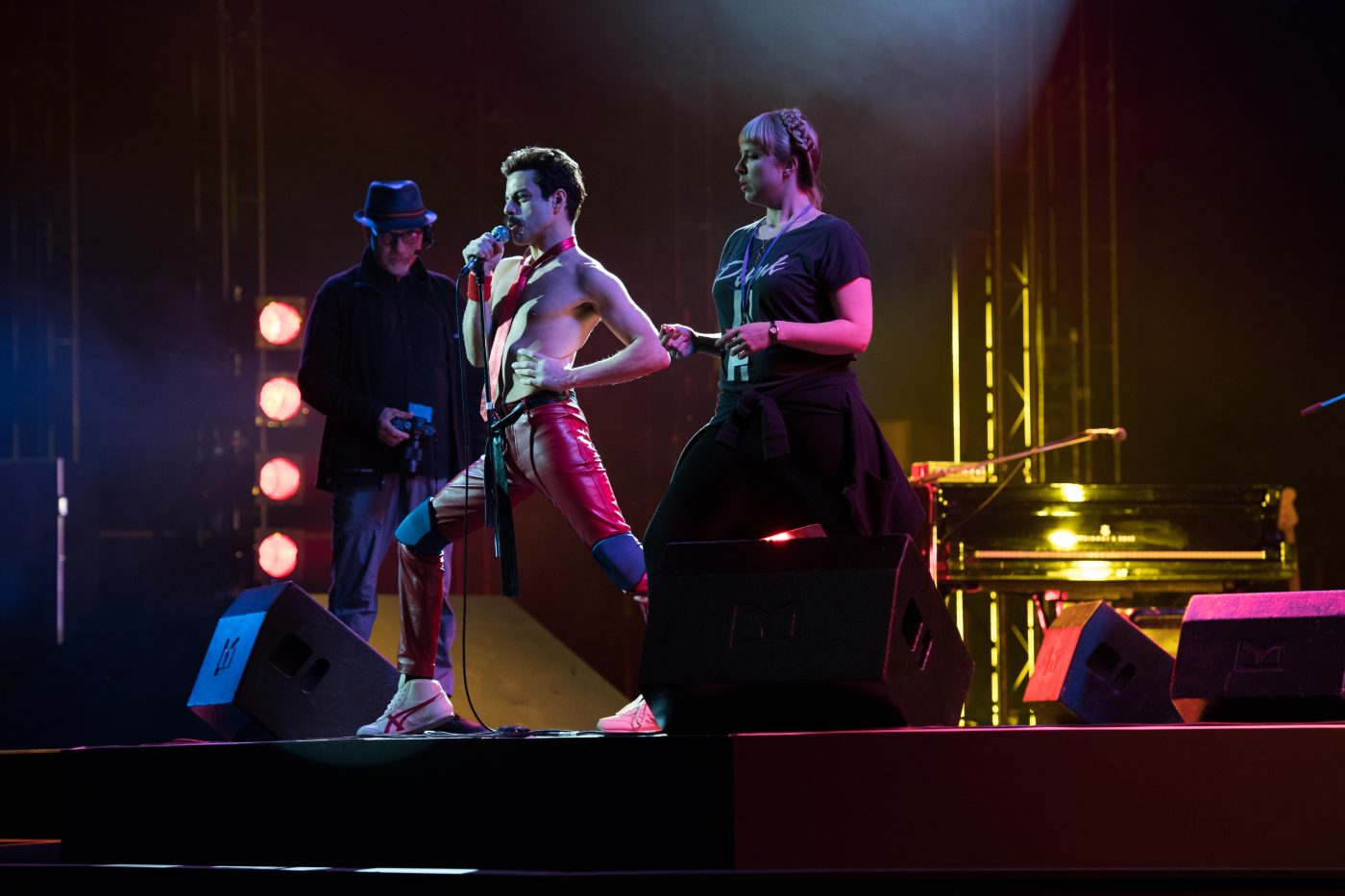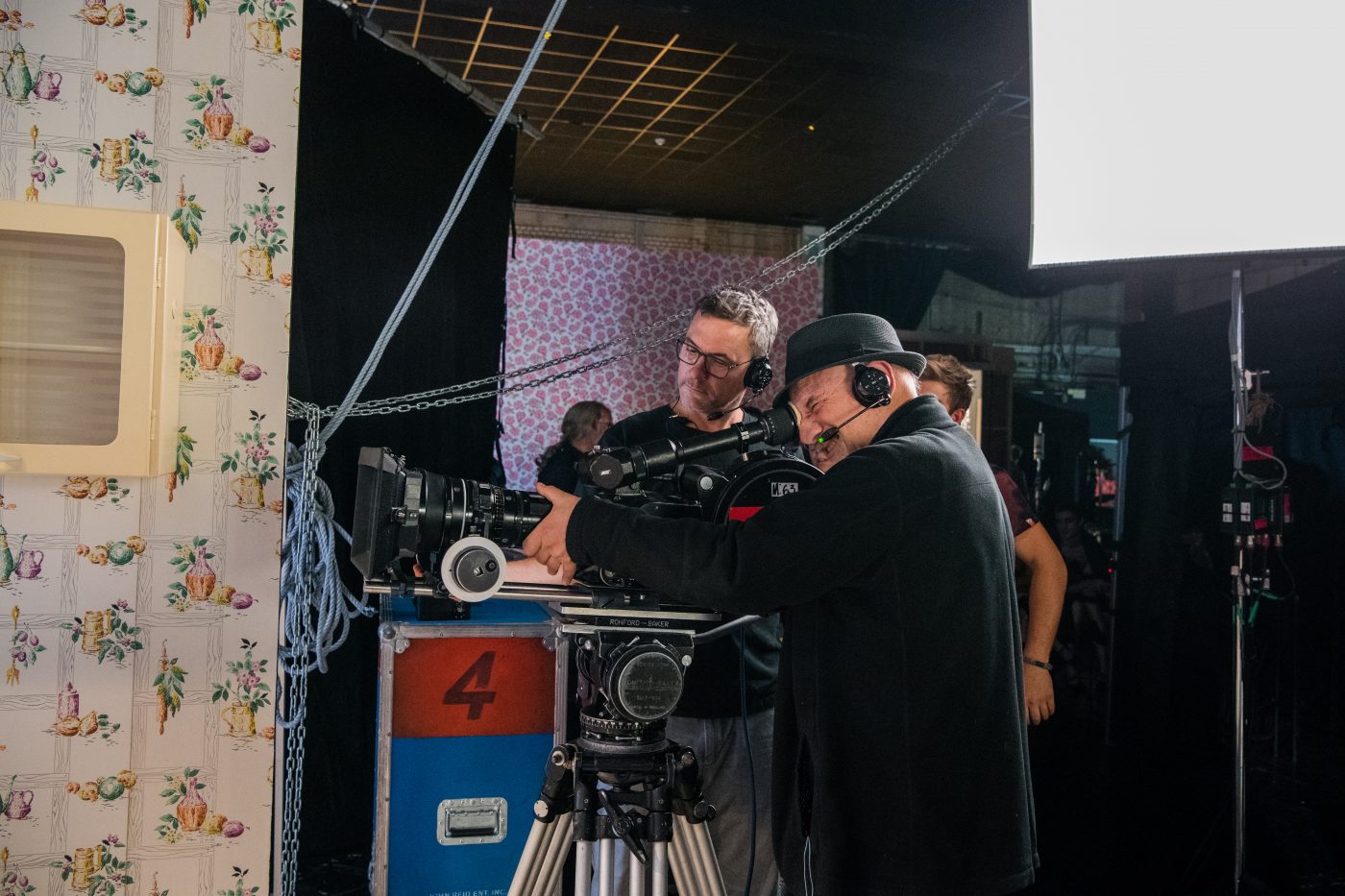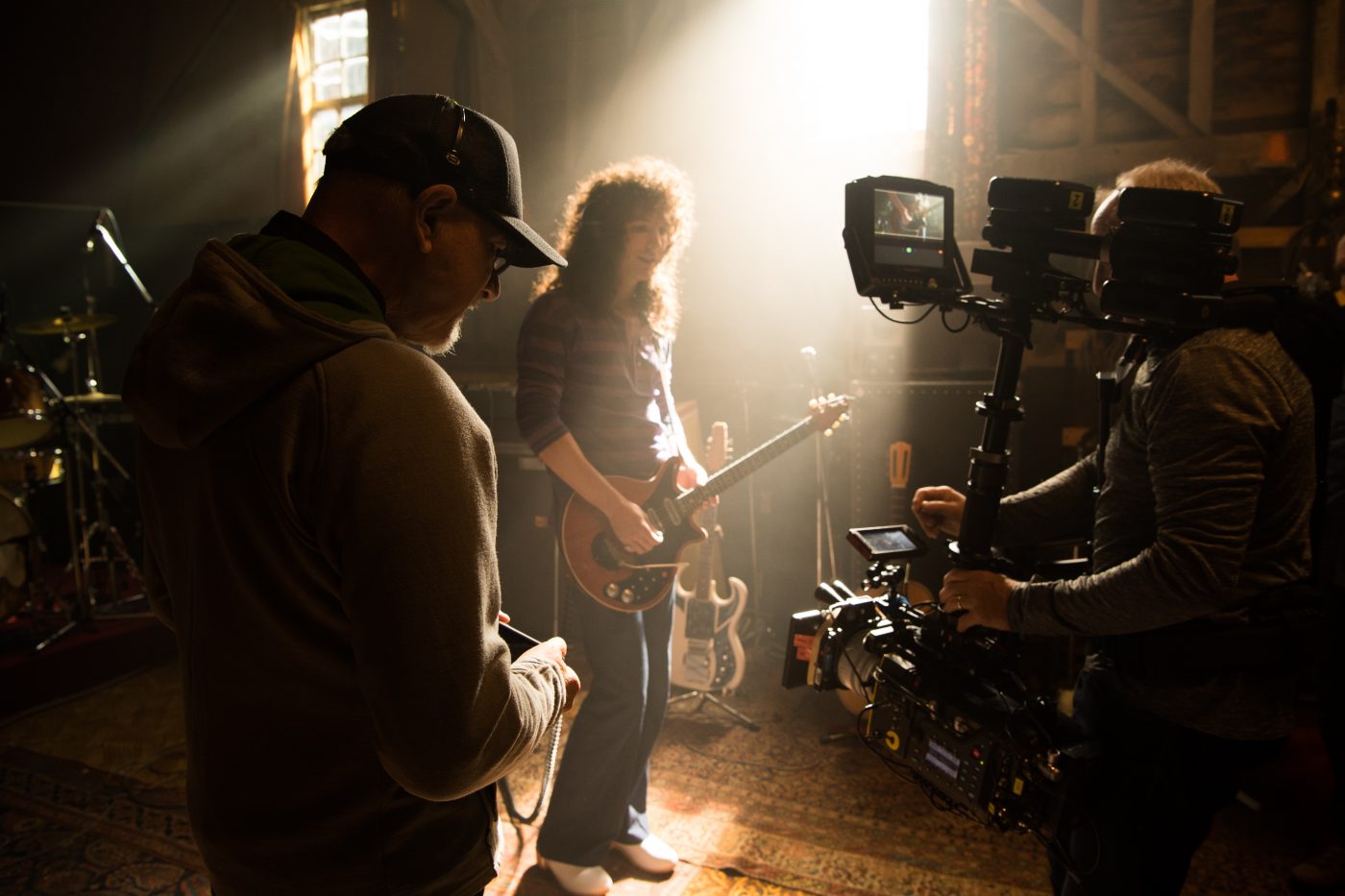How Bohemian Rhapsody‘s Cinematographer Recreated Queen’s Most Iconic Performances
Queen’s 1985 Live Aid performance was the rock event of the century that almost didn’t happen. It was an iconic display of untethered talent and vitality in the darkest days of the AIDS crisis. An estimated 1.5 billion people watched the unforgettable performance all around the world. Freddie Mercury left a lasting impression as a music legend that day. Bohemian Rhapsody cinematographer Tom Sigel studied the broadcast to bring audiences on stage.
“The movie begins with a little tease about the Queen performance at Live Aid. It concludes with their performance at Live Aid in 1985, which is considered by some as the greatest rock and roll performance of all time,” Sigel said. “That’s the bookends of the movie, but after the tease, it goes back to 1970 and it shows Freddie Mercury in his early days as an immigrant in London finding his way through the rock and roll scene.”
Queen fans are very familiar with the magic of the band’s public appearances, but Bohemian Rhapsody delivers an intimate look at the inspiration and perspiration behind their greatest songs. Sigel’s camera takes us inside the studio when Brian May first taught his bandmates to stamp, stamp, clap and the office where the band triumphantly bucked music executives to put their experimental sound on the radio. The film covers more than a decade, which is illustrated visually through subtle clues.
“In terms of the look of the film, I wanted to create an arc, which echoed the psychological journey Freddie and his bandmates took from those early days to the moment where they were these larger than life gods among men of the rock world,” Sigel explained. “The beginning of the movie has a very romantic feel to it. It’s a warm, golden, almost nostalgic look at their early days. As the film progresses and they find success and a world stage and we move into the late 70s early 80s, the look becomes cleaner, sharper.”
One of the film’s most incredible feats is capturing the concert atmosphere. Lighting is a notoriously tricky component to filmmaking, compacted by the recreation of stage design with harsh spotlights and theatrical elements. Sigel carefully recreated the looks for a number of Queen’s concerts at various points in their career. No two shows were ever alike.
“The concerts themselves also show an evolution that was drawn from Queen’s performances from their early days until the height of their success when they had one of the biggest lighting and stage acts in the whole pop/rock music world, including some of the earliest adopters of moving light technology, which we now take for granted and expect in every theatrical performance we see,” Sigel said. “There is quite a bit of footage of Queen’s actual performances throughout the 70s and the 80s. I drew very heavily on that to design the look of the individual concerts from Madison Square Garden to Wembley Arena and so on.”

Looking back from an era of ever decreasing attention spans, Queen had a miraculous ability to captivate audiences. ‘Radio Ga Ga,’ ‘We Will Rock You,’ and others were written not only for the ear but to encourage participation. It was a unifying element that is stunning to see from on stage. Rather than just playing a greatest hits reel, Bohemian Rhapsody evokes the give and take relationship of the band and their fans.
“The big difference is that unlike a concert movie, we’re trying to tell a story,” Sigel said. “There is the occasional point of view of the audience member, but really the great thing we can do in a movie and the thing that this story demands is you put the audience on the stage with the performer. You give them an intimacy with the performer that you wouldn’t have were you there in person.”
Sigel’s preparation is obvious. The climactic restaging of Live Aid is a remarkable reenactment that feels surprisingly intimate.
“In terms of this movie, I had such tremendous respect for Queen as a band and as an icon and their music that I really wanted to get it right,” Sigel said. “I read every book about them. I watched every piece of footage I could watch. I wanted to get it right. I wanted the film to really reflect who the band was, what their music meant and the way things looked throughout the 15-year journey that the movie takes.”

Offstage, the band was breaking new ground and helping each other achieve a pinnacle of creative genius. Only the greatest musical talents could challenge Freddie Mercury’s ability and Brian May, Roger Taylor, and John Deacon aptly filled the role. Yet, the film shines a light on the exuberant frontman.
“It was in the screenplay, it’s in what you watch Freddie go through with his initial love affair with Mary Austin and then when they break up, he begins coming to terms with being gay and what that means in the 70s and then the 80s and what that means in relationship to the rest of the band. His desire to explore different types of music. It’s told really through being up close and personal with Freddie throughout the course of the story.”
Bohemian Rhapsody covers a lot of ground, but Sigel felt Rami Malek’s performance was central to the heart of the film. Malek melts into Freddie Mercury’s skin and the result is truly mesmerizing. Working with a movement coach, Malek captures Mercury’s passion with remarkable accuracy.
“The movie is very much about Freddie Mercury,” Sigel said. “It is a very intimate portrait of him. Rami Malek really captured Freddie’s spirit and soul down to his very unique and extraordinarily particular style of movement and performance that he had on stage. It’s a very intimate look at him. It’s a story of the whole band, but it really is the story of the whole band through the perspective of Freddie Mercury.”
Sigel prepared for the film with intense research and planning, but on set, he was constantly adapting to Malek’s performance.
“Whenever you have a script, you start to break it down in your mind in terms of what the tone of the piece is and what is the appropriate language for the story you’re telling, lens choices, lighting, color, movement,” Sigel explained. “Then you have to apply them to the physical realities that you’re faced with on a set. No matter how much you might have planned in your head exactly how you’re going to shoot something, what the actor brings to the performance can more often than not dictate alterations in that original plan.”
Even with an understanding of Malek’s movement, the approach can change from scene to scene. As the facets of Mercury’s life shift throughout the film, Sigel was constantly reacting to the actors.

“It really depends on the type of scene you’re doing,” he explained. “If you doing an action sequence that involves a lot of stunts or visual effects, clearly you want to steer the actors more in the direction of what that choreography demands. Let’s say you have a more dialogue driven dramatic sequence, you might have a loose idea of what your key moments are and what your overall feeling that you want for that scene to be and focus it in more based on rehearsal and what the actors bring to it from their performance.”
Although more than 30 years have passed since Live Aid aired around the world, Bohemian Rhapsody reinvigorates Queen’s story for a new audience. Mercury’s legacy feels more relevant than ever.
“I think what makes a great story and engages an audience thematically hasn’t changed in hundreds of years,” Sigel said. “The technology that we’re using today and our ability with visual effects to create worlds and images that never seemed possible before is greater than ever and will continue to expand.”
Featured Image: Bohemian Rhapsody Courtesy: 20th Century Fox. Photo Credit: Alex Bailey



